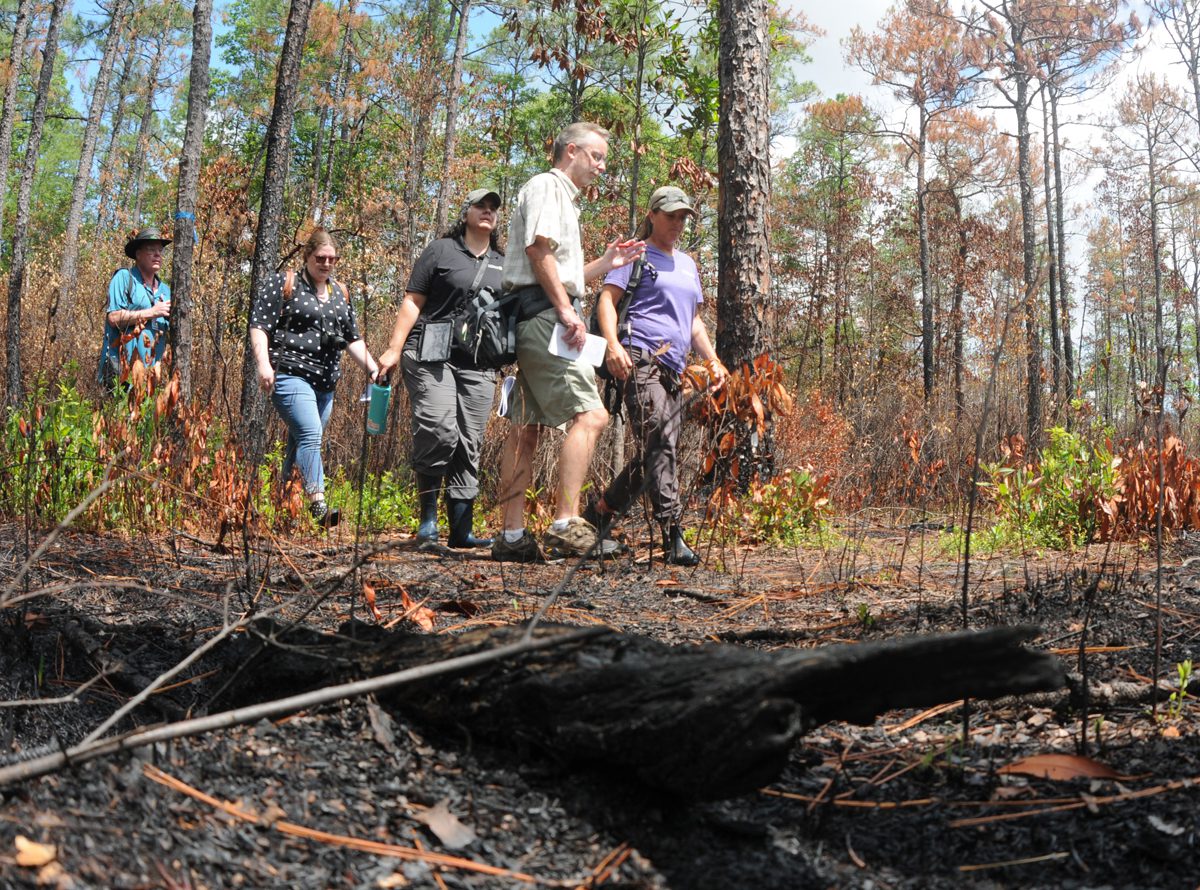
North Carolina is home to nearly 4,000 species of plants. A small percentage of them, but some of the most unusual, can be found in the Green Swamp Preserve, a 17,424-acre nature preserve managed by The Nature Conservancy.
The Green Swamp Preserve in Brunswick County, about a 40-minute drive southeast of Wilmington, remains closed after a recent wildfire, the result of flames escaping the area of a prescribed burn that was in process in June. The fire spread across most of the preserve, covering nearly 16,000 acres and prompting state air quality alerts.
Supporter Spotlight
But once it reopens later this summer, visitors can see 14 species of carnivorous plants, 16 species of native orchids, and other endangered wildflowers on the sun-dappled ground beneath a tall longleaf pine canopy.
The recent blaze was prevented from reaching any nearby private property, and due to the distinctive nature of the fire-adapted longleaf pine ecosystem — and conservancy’s management practices, which included a successful controlled burn in January — it’s more a problem for people who wish to explore the area than the plants that live there.
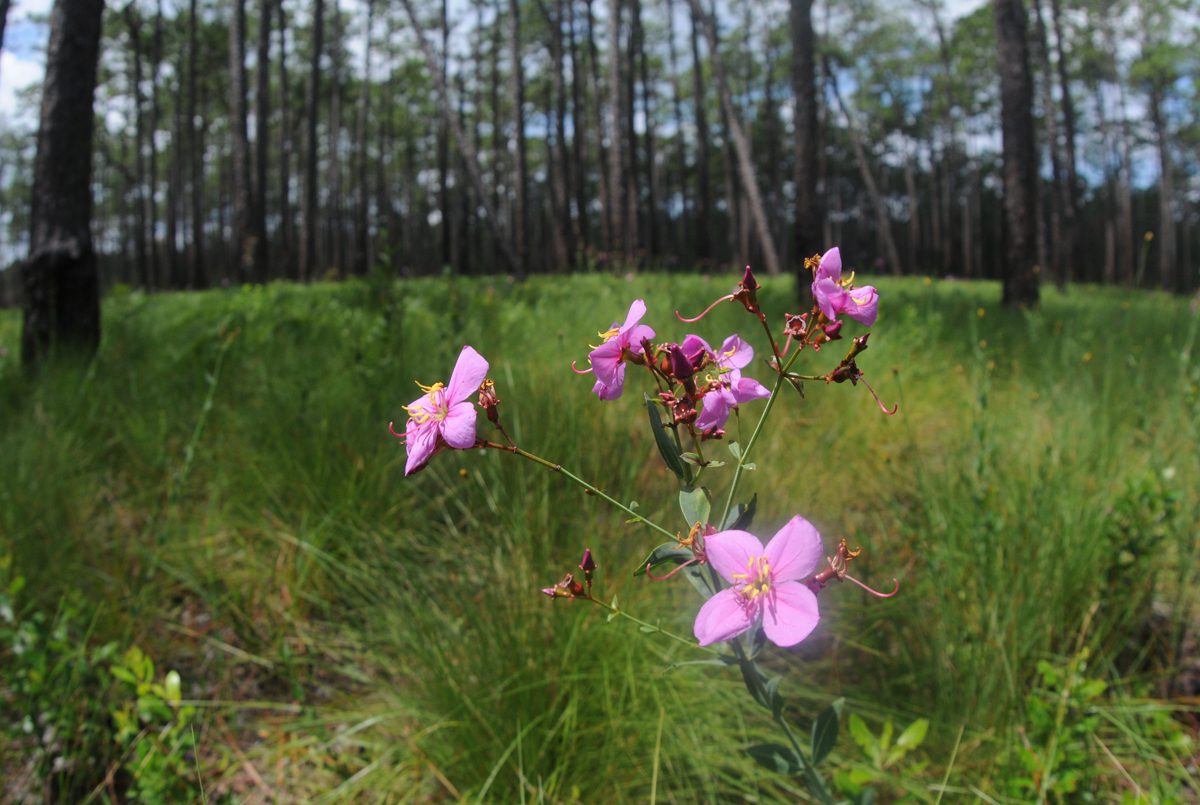
“There are already grasses popping up in the preserve,” Michelle Ly, conservation coordinator for the conservancy’s southeast coastal plain office, explained last week to Coastal Review. She noted that they expect to see some plant species recovering in areas where they previously had been crowded out by taller vegetation. “This wildfire and burnout will benefit the preserve greatly.”
The Nature Conservancy also hosts a “Fire in the Pines” festival in Wilmington, where visitors can learn how controlled burns help plants and animals in these coastal environments and watch a live demonstration burn. This year’s festival is set for Oct.14.
With the recent containment of the blaze called the Pulp Road fire, conservancy officials and scientists on Thursday led a media tour of a part of the preserve that was unaffected by the most recent fire but that was subjected to the controlled burn in January.
Supporter Spotlight
The area of the media tour was lush with color and new growth emerging from the char below.
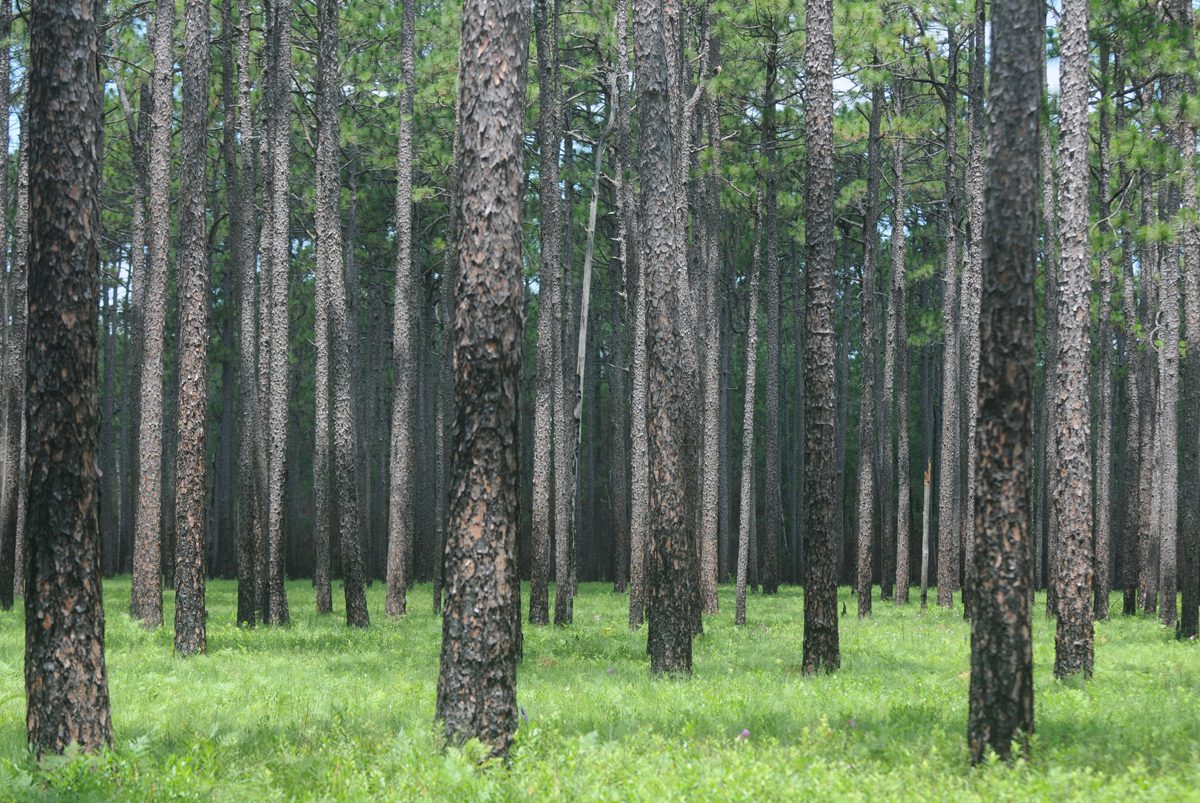
Protecting star species
The star plant species of the Green Swamp Preserve include a huge range of carnivorous plants: Venus flytraps, sundew, bladderworts, butterworts, and four species of pitcher plants.
The conservancy works to ensure the Green Swamp remains a healthy, balanced ecosystem for these specialized plants. It has taken care of the land since 1977, when the Federal Paper Board Co. gifted it nearly 14,000 acres. The company donated an additional 2,577 acres in the late 1980s. Over time, the conservancy has purchased the rest.
The conservancy’s conservation activities center on the longleaf pines that tower above the understory layer. These trees once covered about 90 million acres of the Southeast, from Virginia to Florida and as far west as Texas. Logging and urban development have shrunk their numbers. Today, slightly more than 5 million acres remain, up from just 3.2 million acres in the early 2000s.
The conservancy has been protecting and restoring longleaf pine ecosystems across the tree’s original range. In Ly’s experience, walking through the Green Swamp is like stepping back in time to a less anthropogenically influenced landscape. Longleaf pine stands are naturally open and were historically maintained by low-intensity natural fires often sparked by lightning strikes.
In the early 1900s, forest management policies changed, ushering in an era of fire suppression. This altered longleaf pine ecosystems and put people and infrastructure in danger of larger, uncontrolled wildfires fueled by newly dense understories.
Now, prescribed fire is once again an important part of longleaf pine management. The conservancy performs controlled burns on regular intervals of three to five years to mimic natural fire regimes.
“Preserving longleaf pine is not just about the tree, it’s about the ecosystem,” Ly explained.
The controlled burns knock back any hardwood trees that have taken root and open the understory, so Venus flytraps, orchids, and other native flora can get the sunlight they need to flourish. These burns are also great for birds and other wildlife that thrive in longleaf ecosystems.
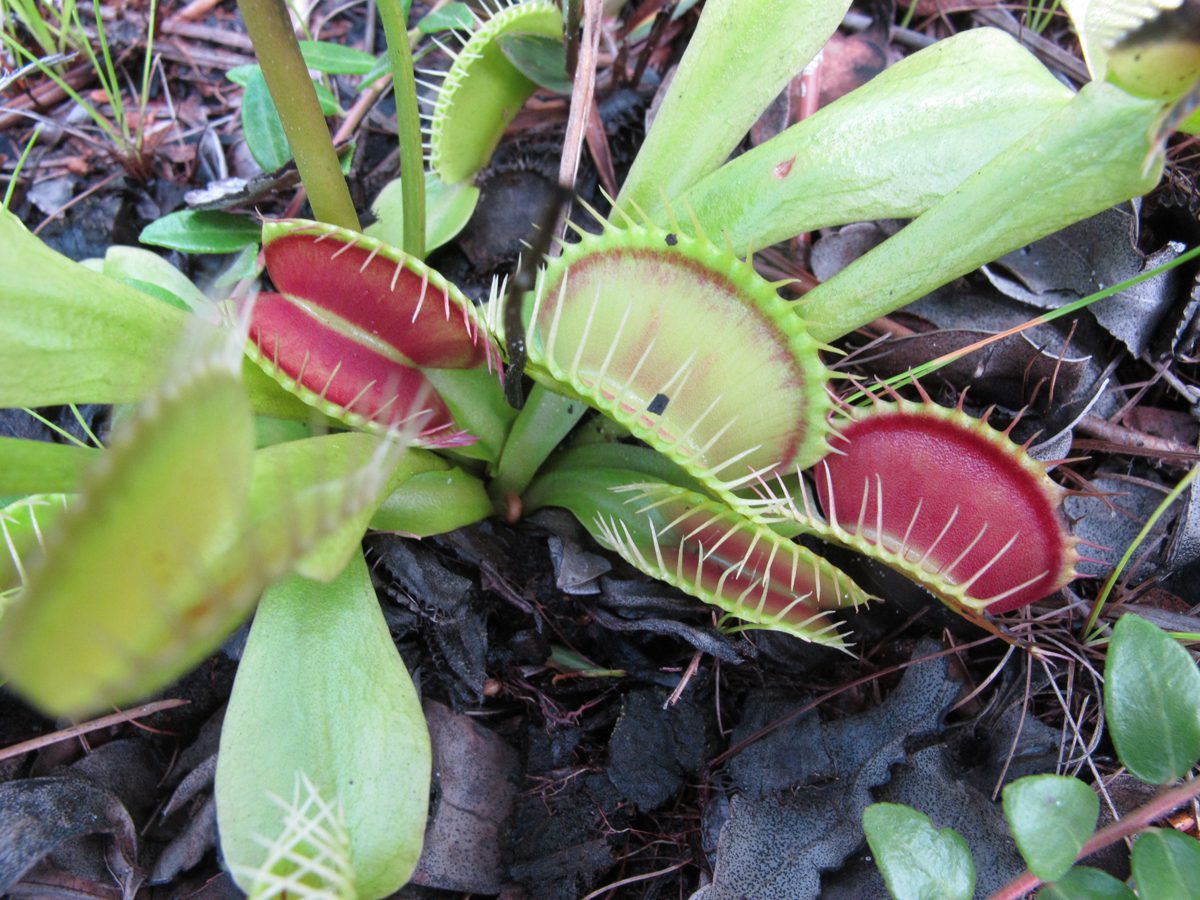
‘An iconic plant’
The conservancy’s website notes the preserve is closed to the public through Aug. 31 as it upgrades the trail, including building a new boardwalk. Don’t let that stop you from planning a trip to visit this fall, though – seeing Venus flytraps in the wild can be a special experience.
“This is such an iconic plant, and there’s just no other place in the world you can see this plant in the wild except here in the Carolinas,” explained botanist and author Scott Zona, who took his first trip to the Green Swamp earlier this year. Zona manages North Carolina State University’s North Carolina Extension Gardener Plant Toolbox and has an appointment at the University of North Carolina Chapel Hill Herbarium.
Wild Venus flytraps are only found within about a 75-mile radius of Wilmington.
Venus flytraps catch their prey using special leaves with sensitive hairs called trigger hairs. Once the hairs sense that an insect has landed on the trap, it snaps shut in less than a second. Any further movement of the prey causes the trap to stay clamped tightly shut as it digests the unlucky passerby. If some nonprey item, like a stick, falls onto the trap, it will slowly open back up for the item to be blown away or fall off.
Venus flytraps also have special reproductive adaptations. While their leaves and stems are low to the ground, their white flowers grow on tall stalks stretching about 8 to 12 inches into the air to keep the insects that pollinate them from becoming lunch.
Zona’s initial visit to the Green Swamp and seeing Venus flytraps in the wild for the first time did not disappoint: “To me, it’s right up there with the first time I went to the Muir Woods in California and saw redwood trees.”
That may be high praise coming from a man who has traveled around the world studying plant ecology and evolution and has a species of palm named after him.
Zona’s colleagues from the United Kingdom, who visited with him, also enjoyed the experience.
“Both of them are very well-respected, well-known botanists who travel the world, and they were just as excited to see these plants as I was,” he said.
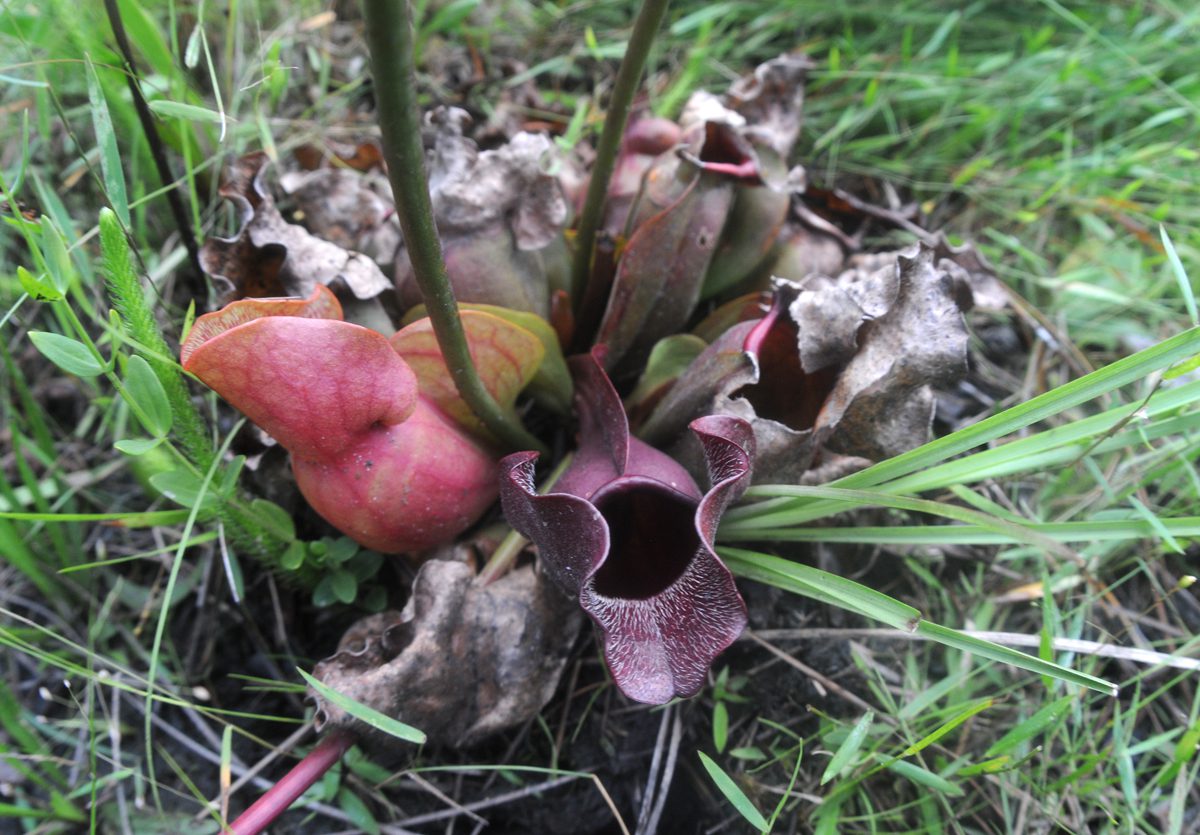
Myriad other fascinating plants also inhabit the Green Swamp. Its purple pitcher plants lack the umbrella-like leaf “hoods” that other pitcher plants have. The preserve also is home to bladderworts, extremely unassuming plants with tiny sacs used to catch prey. Bladderworts are the fastest carnivorous plants in the world, able to trap and eat their prey in less than a millisecond. And the noncarnivorous plants are worth a close look, as well.
“If you’ve never seen native orchids out in the wild, they’re so beautiful and so unique, they’re much different than the ones you see in the grocery store,” Ly said.
While the area’s nutrient-poor and often waterlogged soil might not sound like a great place to be a plant, according to Zona, those are great conditions for Venus flytraps and other carnivorous plants. During the winter they go dormant; in the spring, they revive, unfurling new green leaves. Their diet of insects is an adaptation that helps them make up for the lack of nutrients in the soil.
A 2020 study of the Venus flytrap genome found that the genes associated with flytrap “traps” — the leaves that snap shut on prey — came from copies of genes found in their ancestors’ roots.
The Green Swamp is not only a botanist’s dream, but also a fantastic day trip destination for any nature enthusiast. Zona has just one regret from his trip to the Green Swamp: “We did not have the foresight to pack a lunch with us,” he said. “If we had packed lunch, we could have stayed there even longer.”







